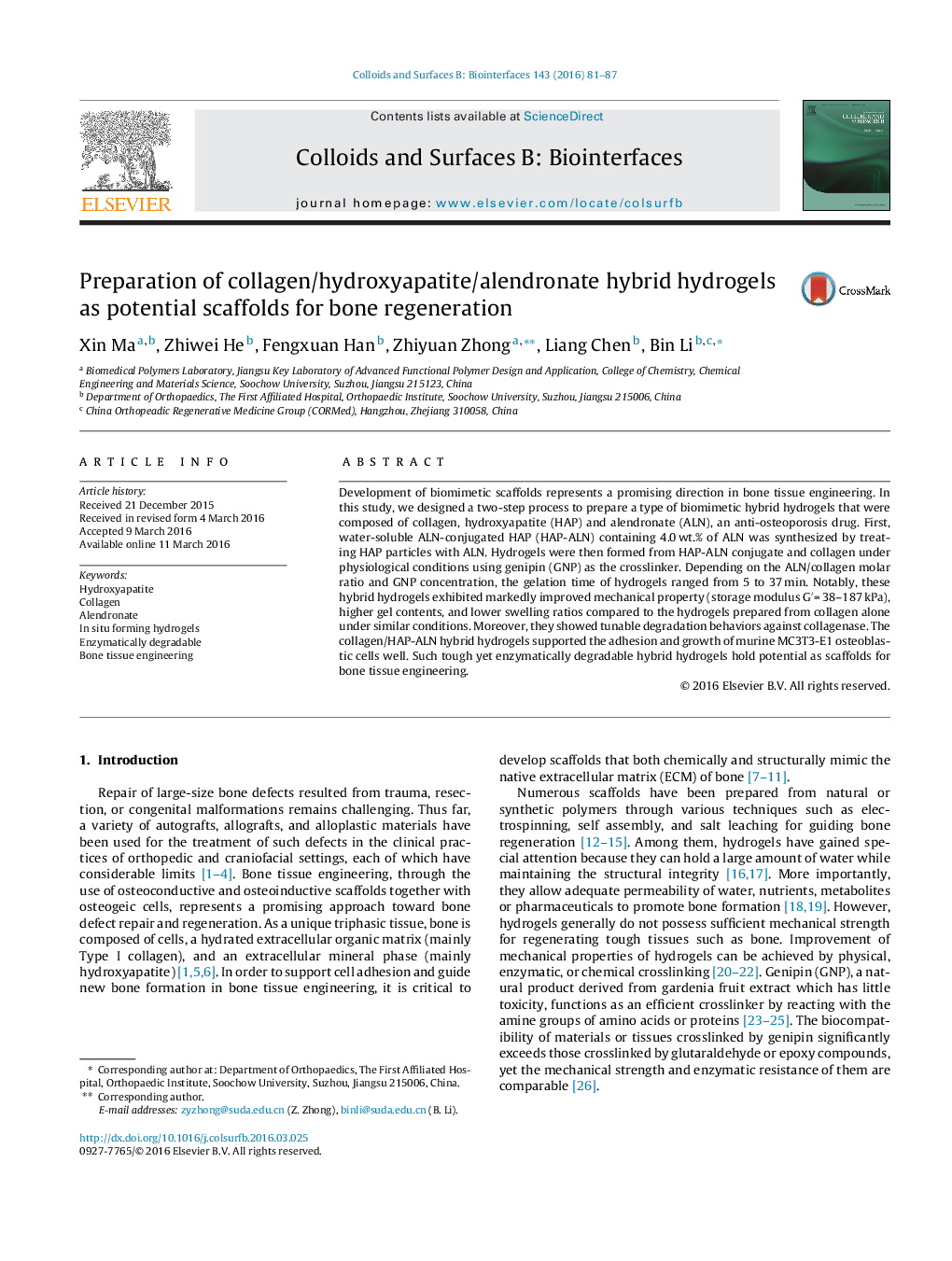| Article ID | Journal | Published Year | Pages | File Type |
|---|---|---|---|---|
| 599025 | Colloids and Surfaces B: Biointerfaces | 2016 | 7 Pages |
•Hybrid hydrogels composed of collagen, hydroxyapatite and alendronate.•Formed under physiological condition using genipin as crosslinker.•Gelation time ranged from 5 to 37 min.•Had improved mechanical property and tunable enzymatical degradation.•Supported osteoblastic cell adhesion and growth.
Development of biomimetic scaffolds represents a promising direction in bone tissue engineering. In this study, we designed a two-step process to prepare a type of biomimetic hybrid hydrogels that were composed of collagen, hydroxyapatite (HAP) and alendronate (ALN), an anti-osteoporosis drug. First, water-soluble ALN-conjugated HAP (HAP-ALN) containing 4.0 wt.% of ALN was synthesized by treating HAP particles with ALN. Hydrogels were then formed from HAP-ALN conjugate and collagen under physiological conditions using genipin (GNP) as the crosslinker. Depending on the ALN/collagen molar ratio and GNP concentration, the gelation time of hydrogels ranged from 5 to 37 min. Notably, these hybrid hydrogels exhibited markedly improved mechanical property (storage modulus G′= 38–187 kPa), higher gel contents, and lower swelling ratios compared to the hydrogels prepared from collagen alone under similar conditions. Moreover, they showed tunable degradation behaviors against collagenase. The collagen/HAP-ALN hybrid hydrogels supported the adhesion and growth of murine MC3T3-E1 osteoblastic cells well. Such tough yet enzymatically degradable hybrid hydrogels hold potential as scaffolds for bone tissue engineering.
Graphical abstractBiomimetic hybrid hydrogels composed of collagen and alendronate (ALN)-functionalized hydroxyapatite (HAP) were synthesized and used as scaffolds for bone tissue engineering.Figure optionsDownload full-size imageDownload as PowerPoint slide
